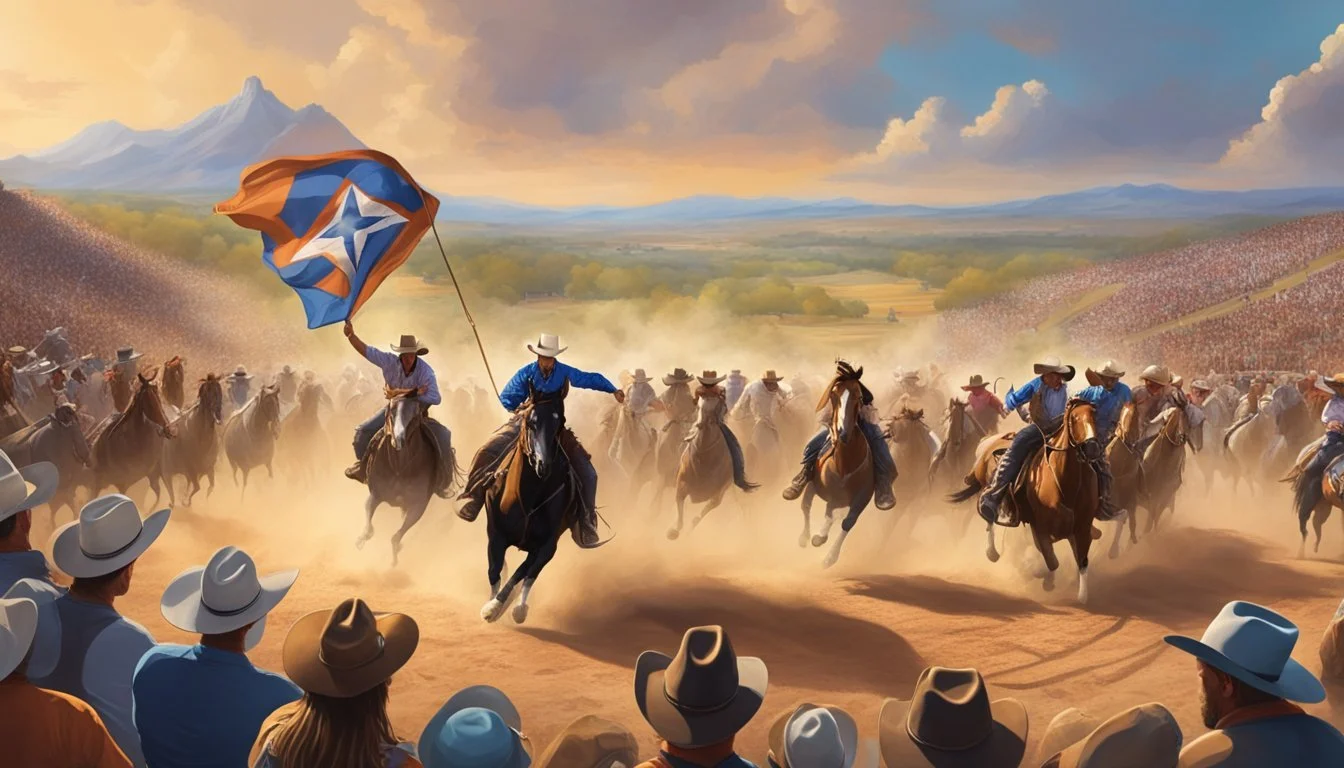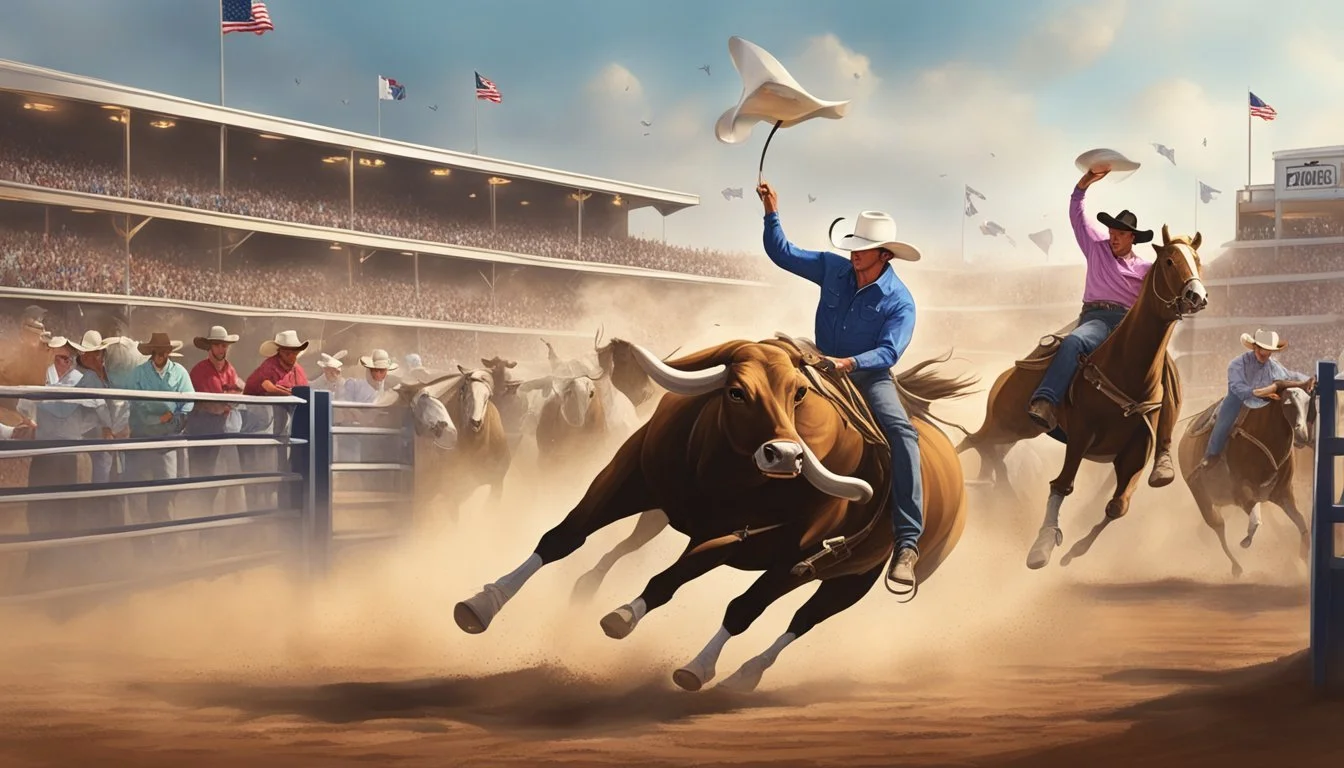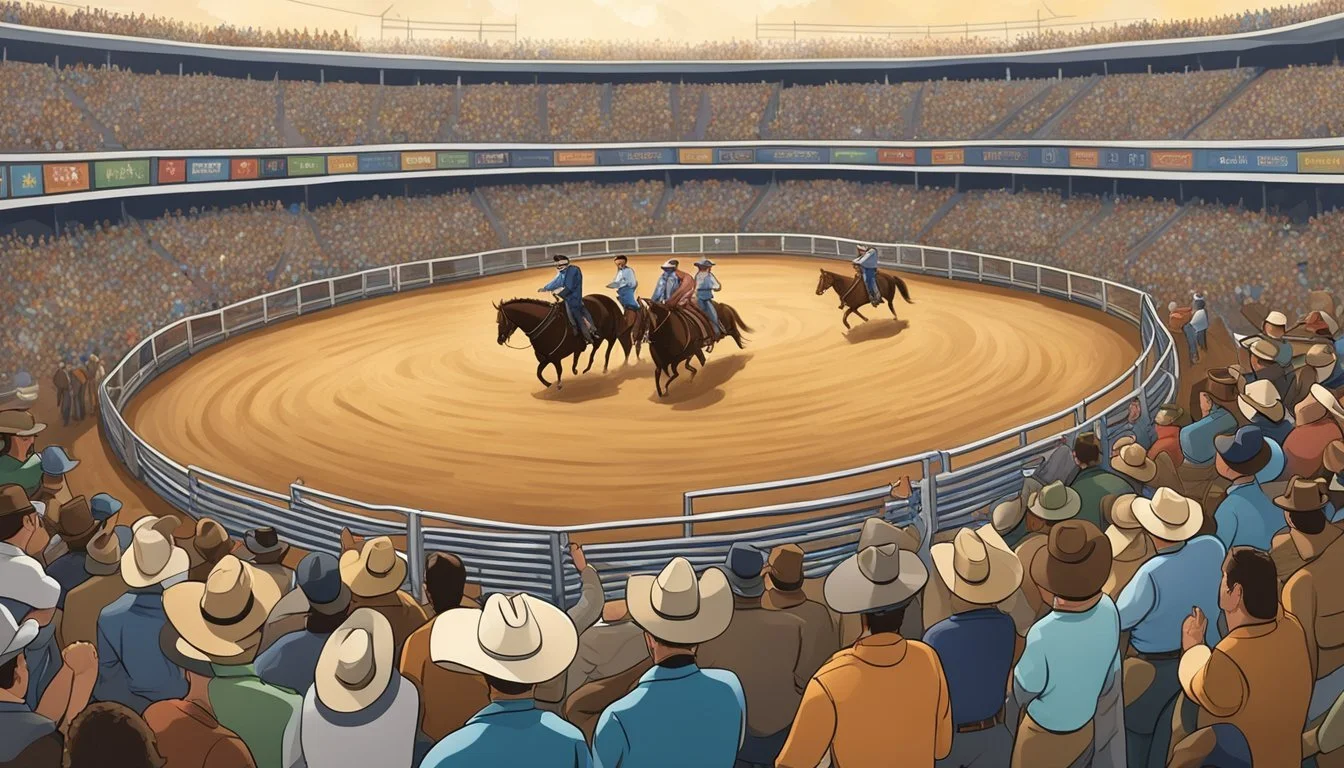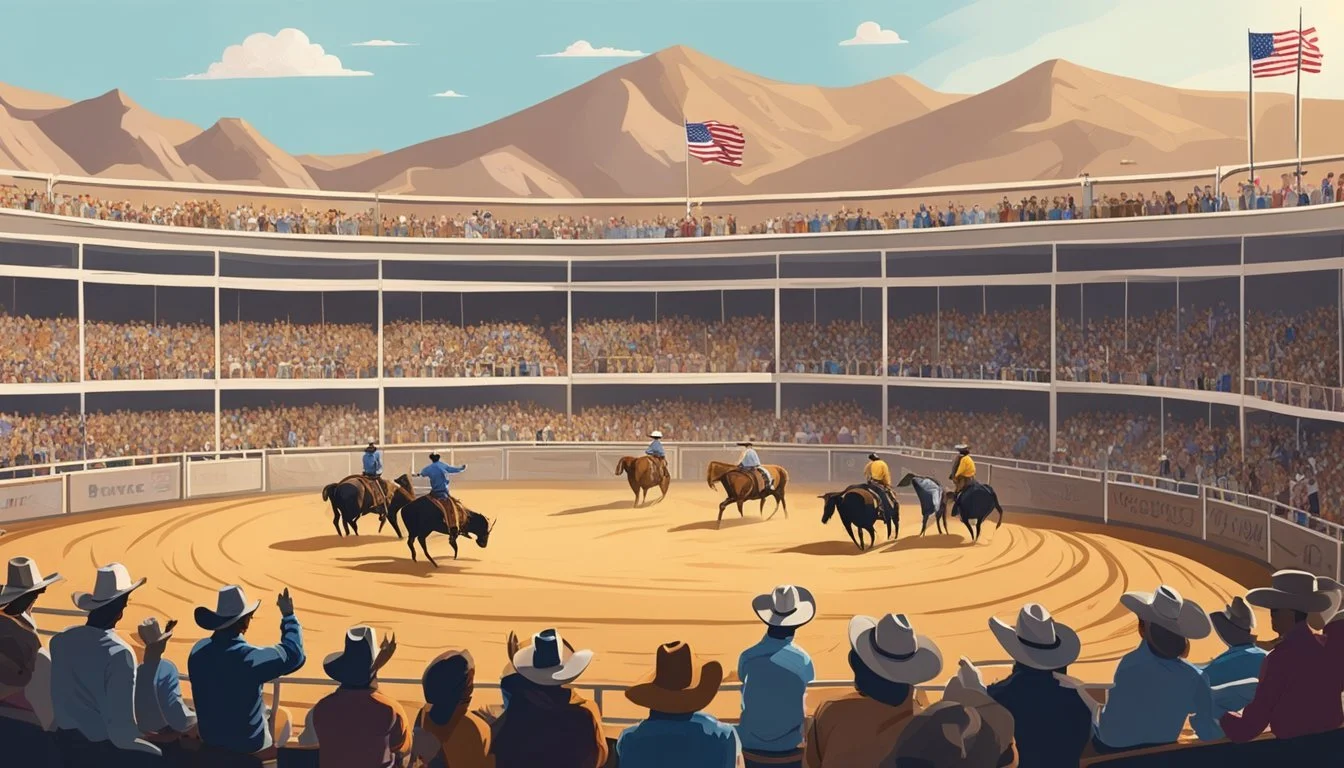The Texas Rodeo Circuit
Your Ultimate Guide to Premier Events
The Texas Rodeo Circuit showcases a rich tradition that has long been a part of the state's cultural heritage. Throughout Texas, rodeos serve not just as competitive events but as vibrant celebrations, offering an authentic glimpse into the cowboy lifestyle that has shaped much of the state's folklore. These events bring together the most skilled rodeo participants, who compete in various disciplines such as bull riding, steer wrestling, and calf roping. Each competition is an exhibition of determination, strength, and agility, providing spectators with an enthralling experience.
From the historical Fort Worth, known for its exhilarating 23-day event, to the Mesquite Championship Rodeo, happening every summer on Saturday nights, the circuit includes an array of key destinations. The Houston Rodeo, recognized as the largest in the world, plays host to a 20-day extravaganza filled with agricultural exhibits, live entertainment, food, and a carnival atmosphere, drawing over two million visitors annually. These highlights are a testament to the scale and popularity of the Texas rodeo scene.
Visitors and locals alike can appreciate the robust competitive spirit found within the circuit. The rodeos' schedules, typically available well in advance, ensure enthusiasts can plan to attend the most significant and thrilling showdowns. Each event's festivities not only display competitive rodeo at its finest but also contribute significantly to the local economy and community spirit, reinforcing the relevance and excitement of the Texas rodeo circuit year after year.
History of Texas Rodeo
Texas holds a storied place in the annals of rodeo history, carving out a cultural legacy that radiates from its early origins to the high-stakes professionalism of today's circuit.
Origins of the Sport
The sport of rodeo in Texas traces its roots to the arrival of horses and cattle by the Spanish in the early 16th century. These were essential to the working practices of ranches and would later become central to rodeo competitions. By the late 19th century, what began as informal contests of skill among cowboys developed into organized events for public entertainment. The city of Pecos claims the distinction of hosting the first official rodeo in 1883, where cowboys competed in events like roping and riding, setting the foundation for future rodeo traditions.
Rise of Professional Rodeo
The popularity of rodeo mirrored the growth of Texas itself as ranchers and townspeople embraced the spectacle and the skills it showcased. Over time, the introduction of prize money and structured competitions led to the increasing professionalism of rodeo. This shift is exemplified by the formation of the Professional Rodeo Cowboys Association (PRCA), which now sanctions events and sets standards ensuring the consistent quality and competitive fairness in today's rodeos. Today's rodeo circuit in Texas is not only a testament to its historical roots but also a showcase of its evolution into a professional sport with athletes who train year-round to compete at the highest level.
Major Rodeo Events
In Texas, rodeo season peaks with a series of major events that showcase the state's rich cultural heritage and competitive spirit. These events draw competitors and fans from around the world, featuring traditional rodeo activities such as livestock shows, bull riding, and barrel racing.
Houston Livestock Show and Rodeo
When: March
Details: The Houston Livestock Show and Rodeo is the world's largest livestock exhibition and rodeo. It's widely recognized for its massive attendance, which often surpasses two million people. This event provides a robust schedule of rodeo competitions, concerts, and educational opportunities.
Rodeo Austin
When: March
Details: Known for its competitive edge, Rodeo Austin boasts exciting rodeo action along with live music and a fair. It's a significant event with a mission to grow the next generation through scholarship and education.
West of the Pecos Rodeo
When: June
Details: Claiming to be the oldest rodeo, the West of the Pecos Rodeo takes place in Pecos, Texas. This event has been a staple in the rodeo calendar since the late 1800s and continues to be a pivotal competition for rodeo athletes.
Fort Worth Stock Show and Rodeo
When: January - February
Details: The Fort Worth Stock Show and Rodeo is one of Texas' most storied rodeo events. It's the oldest continuously running livestock show and features a wide array of activities, including multiple rodeos, livestock competitions, and educational programs.
Rodeo Competitions
The Texas Rodeo Circuit showcases a variety of events that test the skills and agility of both rodeo athletes and their animal counterparts. Competitions range from high-adrenaline roughstock events to precise timed activities.
Bull Riding
In bull riding, contestants strive to stay mounted on a bucking bull for eight seconds with one hand bound to the bull's back and the other in the air. It's a thrilling display where scores from judges are based equally on the rider's ability to maintain posture and the bull's performance, including kicks and spins.
Saddle Bronc Riding
Saddle bronc riding is a classic rodeo event featuring a horse, known as a bucking horse, outfitted with a specialized saddle. Riders use a thick rein attached to the horse's halter and aim for a fluid, controlled ride, maintaining balance and coordination to score points.
Bareback Riding
With only a leather rigging to hold onto, competitors in bareback riding face one of the most physically demanding events. The rider's form and spurring technique, in conjunction with the horse's bucking vigor, are crucial for a high score.
Steer Wrestling
Steer wrestling, also known as "bulldogging," involves a horse-mounted rider chasing a steer, dismounting next to it, and wrestling it to the ground by the horns. Speed and technique are vital, as competitors aim for the fastest times.
Team Roping
In team roping, two riders called "team ropers" work in tandem; the first, the "header," lassoes the steer's horns or neck, while the "heeler" targets the steer's hind legs. Coordination and speed are key in this event that results in a combined time for both ropers' efforts.
Barrel Racing
Barrel racing is a high-speed, timed event where riders navigate their horses in a cloverleaf pattern around three barrels. The aim is to complete the course in the shortest time without knocking over any barrels, showcasing the rider’s and horse's precision and agility.
Cultural Significance
The Texas Rodeo Circuit offers a vivid window into the enduring legacy and current vibrancy of cowboy culture, illustrating its deep roots in Texas heritage.
Cowboy and Cowgirl Influence
Cowboys and cowgirls remain iconic figures within the Texas Rodeo Circuit, symbolizing a rugged, resilient way of life tied to skilled horsemanship and cattle handling. These individuals embody the spirit of Western culture, and their influence permeates through attire, music, and the values celebrated at these gatherings. Their presence goes beyond competition; they educate and enthrall audiences, carrying forward traditions that have shaped the identity of Texas.
Rodeo as Texas Heritage
Rodeos in Texas are more than mere entertainment; they are a testament to Western culture's history and a showcase of living heritage. Events like the Houston Livestock Show and Rodeo draw over a million visitors yearly, demonstrating their importance as cultural staples. At these events, aspects of Texas history, from ranching to the artistry of rodeo, are enacted, celebrated, and preserved, continuing to influence and educate generations on the Lone Star State's proud history.
Rodeo Life and Athletes
The Texas Rodeo Circuit is a vibrant ecosystem where cowboys, riders, and supporting personnel like rodeo clowns dedicate their lives to the cultivation of this historic sport. Embarking on the rodeo circuit involves extensive training, adherence to safety protocols, and a lifestyle deeply rooted in tradition and athleticism.
Training and Lifestyle
Rodeo athletes commit to a rigorous training regimen that is essential for excelling in challenging events like bull riding, bareback bronc riding, and saddle bronc riding. They often practice several hours a day, honing skills that demand exceptional physical strength and mental fortitude. Their lifestyle is nomadic, traveling from one event to another across Texas, which hosts more than 100 sanctioned rodeos annually. Relationships within the circuit are pivotal, as cowboys and other rodeo participants form a tight-knit community bound by a shared passion for the rodeo lifestyle.
Health and Safety
Health and safety are paramount in the rodeo world. The inherent risk of handling powerful livestock necessitates the use of protective gear, such as helmets and vests for riders, and attentive medical teams on standby. Rodeo clowns play a critical role in safeguarding bull riders by distracting the bulls after a rider has been dismounted. The Professional Rodeo Cowboys Association (PRCA) closely monitors events to ensure the highest safety standards are met for both the participants and the animals involved.
Rodeo Scheduling and Circuits
The Texas Rodeo Circuit is a rigorously structured series of events, culminating in the prestigious Circuit Finals. The season is packed with over 100 PRCA-sanctioned rodeos, offering both roughstock and timed events.
Annual Rodeo Circuit
Each year, the Texas Rodeo Circuit oversees more than a hundred Professional Rodeo Cowboys Association (PRCA) sanctioned events. The rodeo season typically adheres to a well-planned schedule, ensuring that participants and fans can follow their favorite competitions throughout the state. The circuit includes key competitions in various locations, with contestants competing in both roughstock events—such as bareback riding, saddle bronc riding, and bull riding—and timed events.
Here is a breakdown of event types within the circuit:
Roughstock Events: Equal scores for performance of the contestant and the animal.
Timed Events: Skills in roping and wrestling are pivotal for a winning time.
Circuit Finals
The Circuit Finals mark the zenith of the competitive season within the Texas Rodeo Circuit. This event usually takes place at the Extraco Events Center in Waco, Texas. Throughout the season, cowboys and cowgirls accumulate points and the highest-ranking individuals qualify for the Circuit Finals. The PRCA RAM Texas Circuit Finals are noted for their intense competition as participants vie for top honors and ultimately aim for a spot at the national level.
Notable Information for Circuit Finals:
Location: Extraco Events Center, Waco, Texas
Competitive Aspect: Qualification is based on season-long performance and rankings.
Prestige: Winning the Circuit Finals can lead to further opportunities at national events.
Family Events and Attractions
The Texas Rodeo Circuit is not only about thrilling rodeo competition—it's a family affair with a host of activities and attractions that appeal to all ages. From interactive livestock exhibits to vibrant carnival rides, families will find plenty to enjoy.
Livestock Shows and Petting Zoos
At the heart of the Texas rodeos are the livestock shows, where attendees can see a variety of farm animals and learn about the agricultural industry. Families can get up close with friendly animals at the petting zoos, allowing children a hands-on experience. It's an educational opportunity where they can learn about the care and characteristics of different livestock breeds.
Carnival and Fairgrounds Attractions
The excitement continues at the rodeo carnival, offering a wide array of fairgrounds attractions. With everything from pony rides for the little ones to exhilarating rides for thrill-seekers, the carnival atmosphere is electric. Amid the fun, attendees can savor the flavors of traditional carnival food, from sweet cotton candy to savory barbecue, ensuring that there's something to satisfy every palate.
Economic Impact
Rodeos in Texas not only provide entertainment but also significantly boost local economies. Events like the Houston Livestock Show and Rodeo generate substantial economic benefits through visitor spending, job creation, and increased commerce.
Impact on Local Economies
Rodeos bring a surge of economic activity to Texas cities. For instance, the Houston Livestock Show and Rodeo generates hundreds of millions of dollars annually. This influx is largely due to visitor expenditures on accommodations, dining, and shopping. The economic benefits extend beyond the event itself, supporting local businesses and creating jobs.
Prizes: Cash prizes incentivize participation, drawing competitors from various locations.
Fees: Entry fees and vendor fees contribute to the events' revenues.
Local businesses: A spike in tourism benefits hotels, restaurants, and retailers.
Sponsorships and Commerce
Corporate sponsorships are vital to the financial success of rodeos, underpinning operational costs and prize pools. Sponsorships range from local businesses to multinational corporations, all seeking to associate their brands with the rodeo's audience.
Direct commerce: Sponsorships and commerce activities raise significant funds for the events.
Indirect impact: The presence of vendors and the commerce between businesses during these events lead to longer-term economic agreements and partnerships.
Sponsorship deals bring financial stability to the events and support the wider local economy through business-to-business transactions and the amplification of the event's reach and impact.
Tips and Insights for Attendees
Navigating the Texas Rodeo circuit requires a bit of planning, but with the right knowledge, attendees can enhance their experience. The following segments provide practical advice on maximizing your visit and exploring the offerings beyond the main events.
Planning Your Rodeo Visit
Dates and Tickets: It's essential to check the dates for the particular rodeo you wish to attend and purchase tickets in advance, as these events can sell out quickly. The Texas rodeo season primarily peaks in February and March, with events like the Fort Worth Rodeo paving the way.
Accommodation: Book accommodation early, especially if traveling to a small town like Pecos, where options can be limited.
Transportation: Familiarize yourself with the rodeo location and parking options. Many events are held on fairgrounds or near Main Street areas, where parking can be challenging.
What to Wear: Dress for the occasion; comfortable boots and a hat are advisable, as you'll be on your feet much of the day.
Exploring the Vendor Area
Attendees should not miss the vendor area, as it's an integral part of the rodeo experience.
Local Crafts and Goods:
Main Street: Often, the rodeo will be accompanied by a Main Street fair-like atmosphere with vendors selling local crafts.
Food and Beverages: Expect a wide variety of food options, from traditional BBQ to foot-long corn dogs, and beverages for all tastes.
Commercial Stands:
Merchandise: Look out for official rodeo merchandise to commemorate your visit.
Information: Seek out the information stands for guides and spectator tips to help navigate the event efficiently.
Conclusion
The Texas Rodeo Circuit stands as an exciting display of the state's deep-rooted culture. It is a series of events where energy and skill come together to offer spectators an authentic glimpse into the cowboy lifestyle. With origins dating back to the late 1800s, these rodeos are woven into the fabric of Texas history.
These events take place across various working ranches and venues, each adding its unique flavor to the circuit. They draw cowboys and spectators alike, offering a mix of traditional rodeo competitions and modern entertainment. Key rodeos, such as the Fort Worth Stock Show & Rodeo, have a prestigious history and deliver an action-packed experience with notable prize payouts that attract top talent.
Attendees can expect:
Vibrant displays of horsemanship and cattle handling.
Competitions that test the grit and skill of participating cowhands.
A festive atmosphere enriched by live music and carnivals.
These rodeos are not simply competitions; they serve as celebrations of Texas' cowboy heritage. They offer something for everyone, from the rodeo enthusiast to the curious visitor. While past rodeos have set high standards, future events on the Texas Rodeo Circuit continue to promise excitement and a reflection of the enduring spirit of Texas' working ranches.











